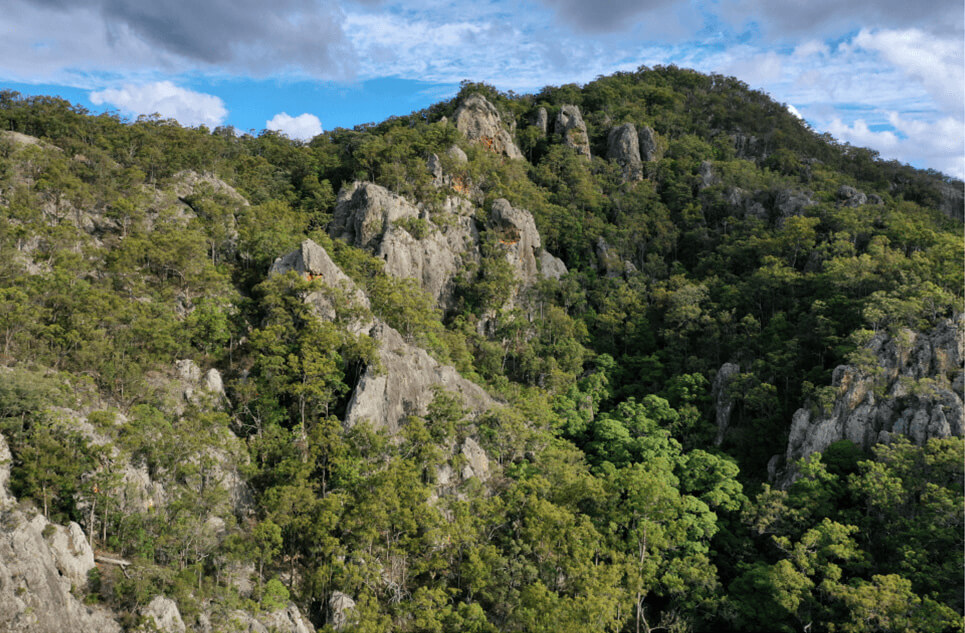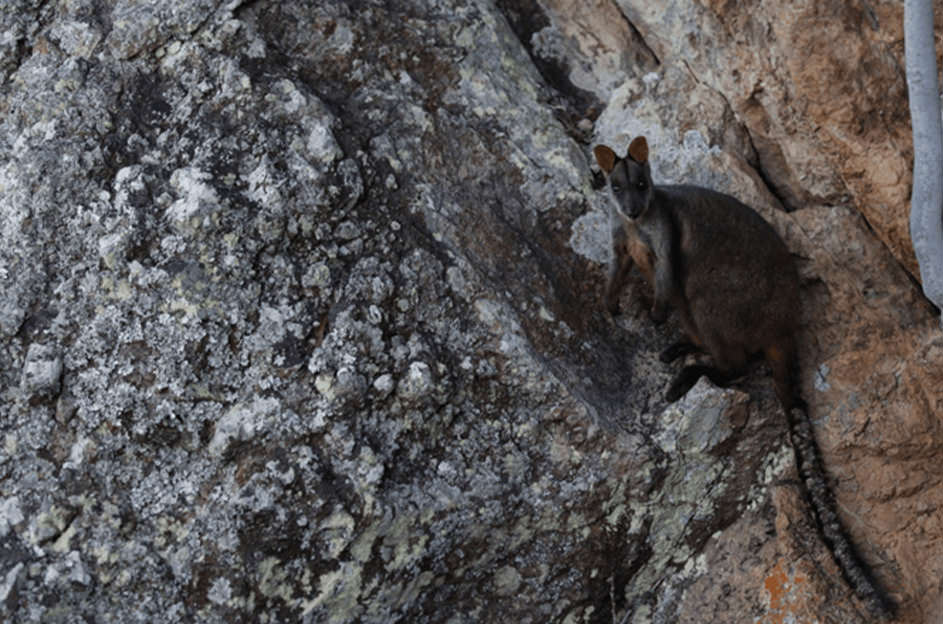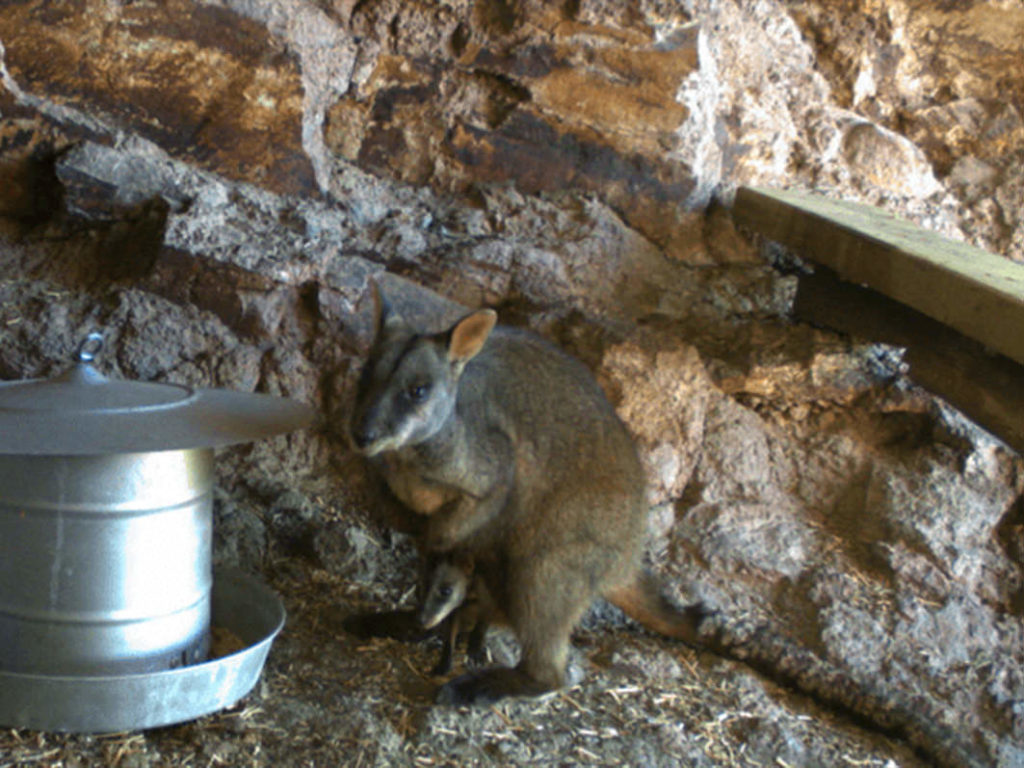Adjoining Mt Barney National Park on the border of Queensland and New South Wales lies Gillies Ridge Nature Refuge. As beautiful as our property is, it doesn’t have a reliable natural water source for our mountain colony of Brush-tailed Rock-wallabies (Petrogale penicillata). Most other rock-wallaby colonies in South East Queensland have access to water. Our colony has endured trying conditions, suffering from habitat loss both during the drought and for about six months after a wildfire in 2020. Our rock-wallabies even resorted to eating casuarina seeds rather than their preferred diet of native grasses.


As a buffer against future climate challenges to the Brush-tailed Rock-wallaby colony and other local wildlife, such as Koalas and Glossy Black-Cockatoos, it was proposed to install water collection panels on the rocks above the caves that are scattered throughout our property. Water harvested from the panels was then fed into small water tanks placed inside the caves.


As well as providing for our mammalian neighbours, aboreal water troughs also allow for birdlife to thrive in the area. Glossy Black-Cockatoos, for instance, need to drink daily to survive. By providing an approved supplementary water supply for these vulnerable wildlife species, our property and others like it allow for populations to exist in otherwise uninhabitable areas.
During the drought I was carrying water up manually for the colony. I observed that the Brush-tailed Rock-wallaby colony was drinking water at the rate of about one-and-a-half litres a day. We therefore chose to install multiple tanks, to ensure a secure water supply during dry times. The steep and rugged terrain also makes multiple tanks a necessity to be useful for fire preparedness.


Inspired by the system of a friend in Kangaroo Valley, New South Wales, I decided to install water collection infrastructure in each cave. These caves are a critical component of the rock-wallaby habitat that was largely destroyed in the 2019 November fires. Unfortunately, the August 2020 fires destroyed the PVC piping, of which there was no trace, and the roofing materials were badly scorched. Inside the caves remained untouched, indicating that our plan could still be successfully implemented. Thankfully, the colony survived.

This year, we started again from scratch, this time opting for all-metal materials for the exposed panels and guttering. To avoid fire damage, we built the water harvesting panels on a rock ledge above the cave, with the tanks and anything combustible set up safely inside the caves.
Carting the tools and materials up was a huge job. We could not have done it without the help of volunteers from the Wildlife Preservation Society of Qld. The outpouring of assistance has been enormously heartening in the face of many challenges.
Regular monitoring of the systems will be critical to ensure they remain disaster-ready. Because of the difficulties in climbing to the caves and the shyness of Brush-tailed Rock-wallabies, a remote system (we use a HyperFire Camera) is necessary for proper monitoring. This allows for world-wide remote access to the monitoring camera through email or Instagram.
Our colony will be ready for the next natural disaster.
References and Further Reading
Birdlife Australia (2019) Black-Cockatoo Conservation and Recovery: Guidelines for councils and land managers, available online at: www.birdlife.org.au/documents/BirdLife_Black-Cockatoo_Guidelines_November_2019.pdf
Article and photos by Ian Beale
Land for Wildlife member
Barney View, Scenic Rim
